Timbuk2 Division Laptop Backpack Deluxe Review
Compression straps and a fabric welt hamper the Timbuk2 Division Laptop Backpack Deluxe’s accessibility, though comfort and build quality are still on point.
Our Verdict
Save time. Get access to brief summaries of our reviews so you can browse and make decisions more efficiently.
Pros
- Comfortable carry with only slight hint of sagginess
- Unique water bottle pocket feels stretchy, well-padded, and robust
- Laptop compartment thickly padded against the back panel
Cons
- Compression straps block main compartment access
- Sternum strap has only three levels of height adjustment
- Very minimal false bottom under the laptop compartment
Technical Details
-
Capacity
22l
-
Weight (lb)
2.2 lb (1 kg)
-
Dimensions
17.3 in x 10.6 in x 5.12 in (43.9 x 26.9 x 13 cm)
-
Notable Materials
YKK Zippers, Duraflex Hardware, Woojin Hardware, Polyethylene, Polyurethane (PU)
-
Manufacturing Country
Indonesia
-
Laptop Compartment Size
15"
We're able to fit a 16" MacBook Pro
-
Warranty Information
Buying Options



Full Review
When we reviewed Timbuk2 Authority Laptop Backpack Deluxe, we walked away with a good impression. We commended the backpack for its comfortable harness system, clean aesthetics, and efficient features like the gusseted front compartment. Now, though, can we say the same about its smaller sibling, the Division Laptop Backpack Deluxe?
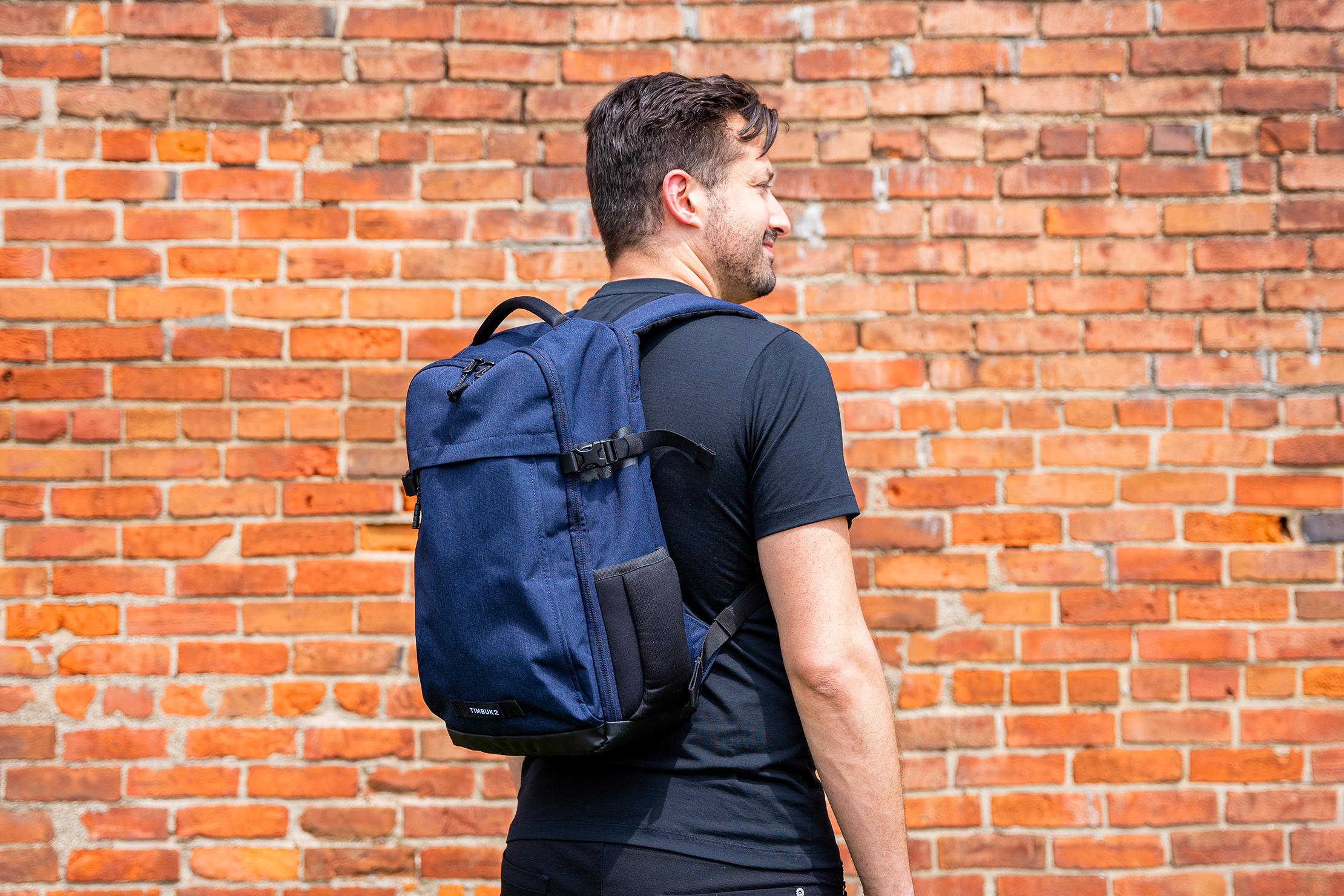
The looks are undoubtedly similar, while the comfort and fit bring a sense of familiarity. However, the Division does have its weaknesses that can be broadly rounded up under accessibility. Whereas the Authority felt efficient with its features, the Division’s doesn’t feel as cohesive, with straps, welts, and other parts clashing with each other.
External Components
Right off the bat, you can clearly see the Division Laptop Backpack Deluxe’s striking resemblance to its sibling, the Authority Laptop Back Deluxe. So don’t worry; the universe isn’t messing with your mind or anything; the bag looks familiar because it is—at least in terms of aesthetics.
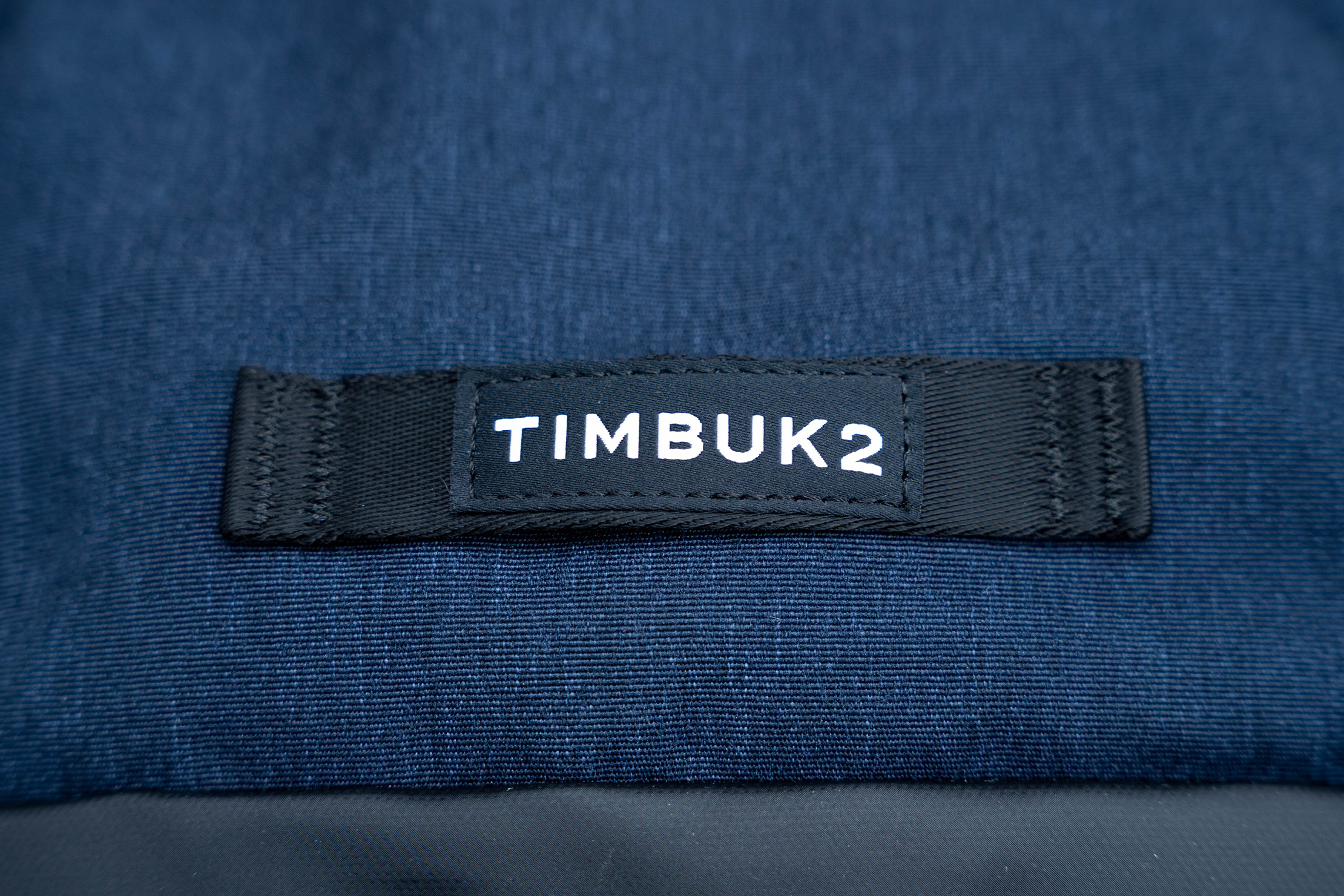
It may be an unfortunate coincidence that we happen to test both backpacks in the same Eco Nightfall colorway. That really does make it tricky for the Division to distinguish itself from the Authority. On the other hand, both backpacks scored very favorably in our Instagram polls, so the resemblance may not be purely coincidental and rather intentional by Timbuk2. As the saying goes, “If it ain’t broke, why fix it?”
At the front, near the bottom, is the brand’s logo which also doubles as a loop where you can attach a bike light. Timbuk2’s always made biking a part of their branding, so it’s not surprising to see them implement it in a literal fashion. They don’t specify the kind of nylon fabric they’re using here. However, it feels fairly close to the one used in the Authority (630-denier) in terms of durability and looks. It has a subdued denim-like appearance that we dig.
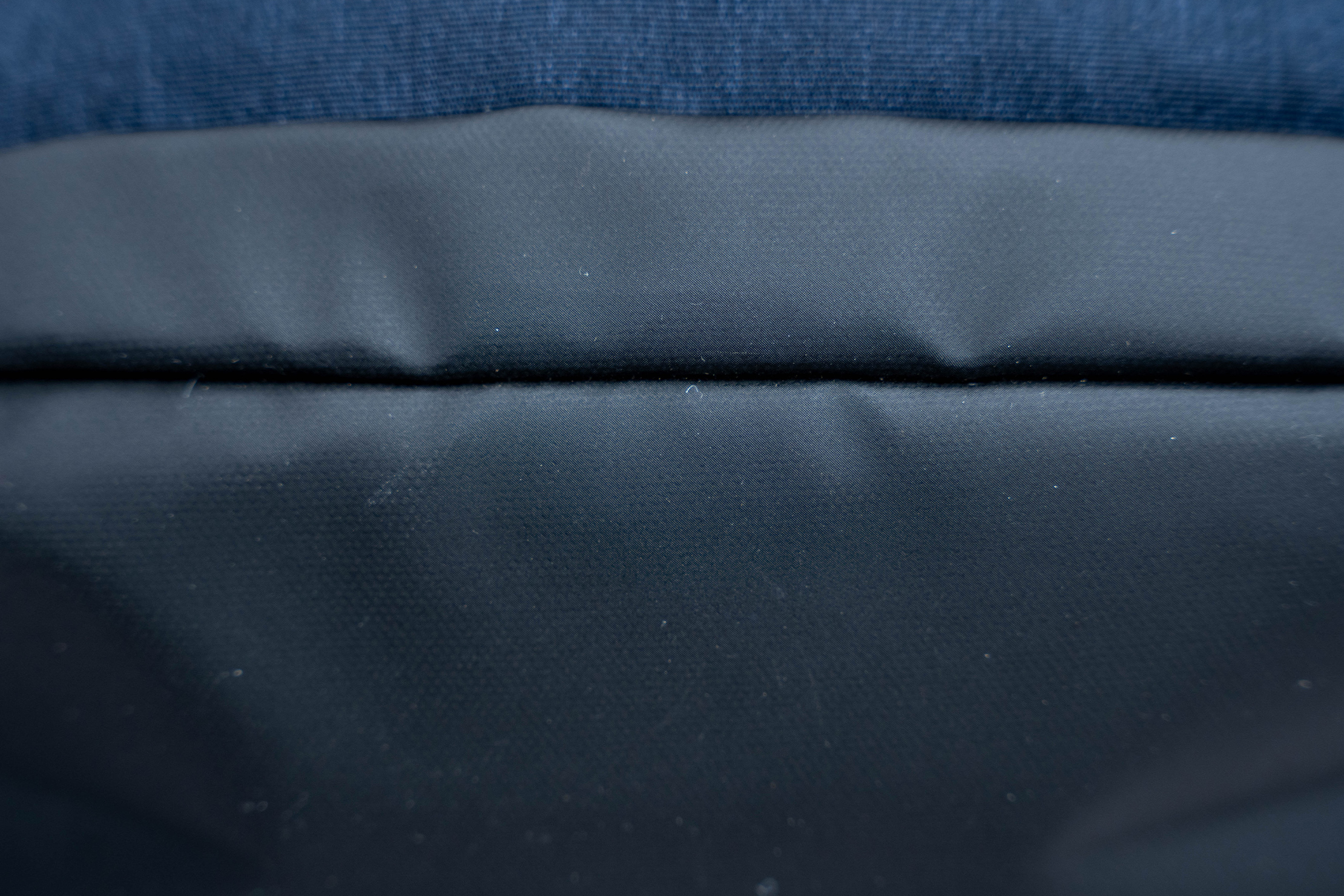
The base of the bag trades out the nylon for a more tarp-like material. Its slick finish deals with moisture from surfaces better than more absorbent fabrics. That should help keep the Division looking pristine for longer, even when you’re setting the bag on wet pavement frequently.
There is a dedicated handle at the top. It’s well-padded and comfortable to grab. Plus, it’s centered and the kind that’s just a plain loop situated between the shoulder straps. This means the bag stays centered and balanced even while carrying it by hand.
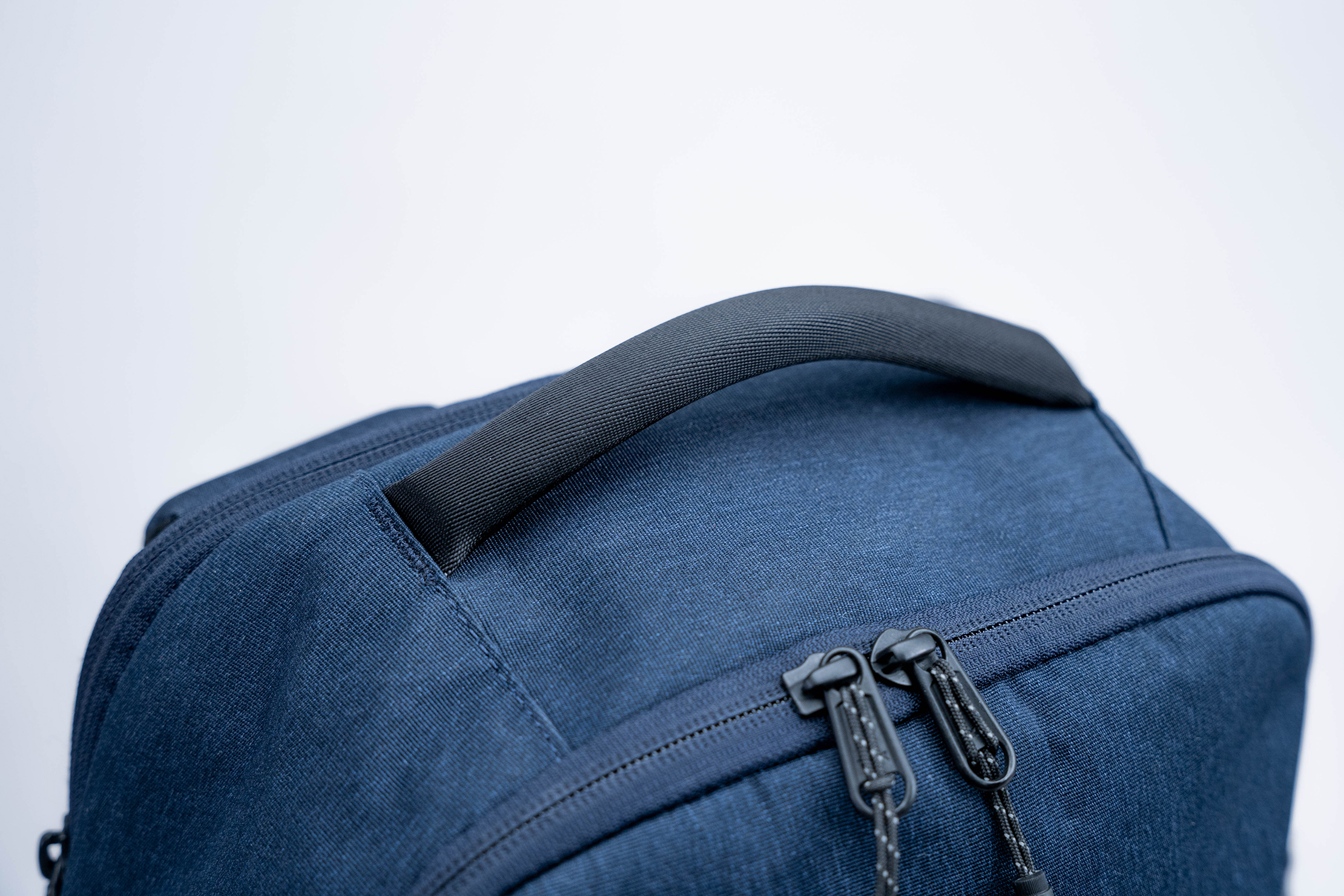
Like the Authority, the Division also has a pair of compression straps. This time, instead of having them at the bottom, they’re located on each side closer to the top. We normally like having compression straps for the sake of getting a more condensed and balanced fit. In the case of the Division, though, we’re not sure it’s necessary.
First off, the 22-liter Division is already relatively compact, not to mention slim for its given capacity. Second, the compression straps don’t really cinch the sides down all that much, even when they’re fully tightened. Worse still, they hamper quick access to the main compartment since they’re located along the zipper track.
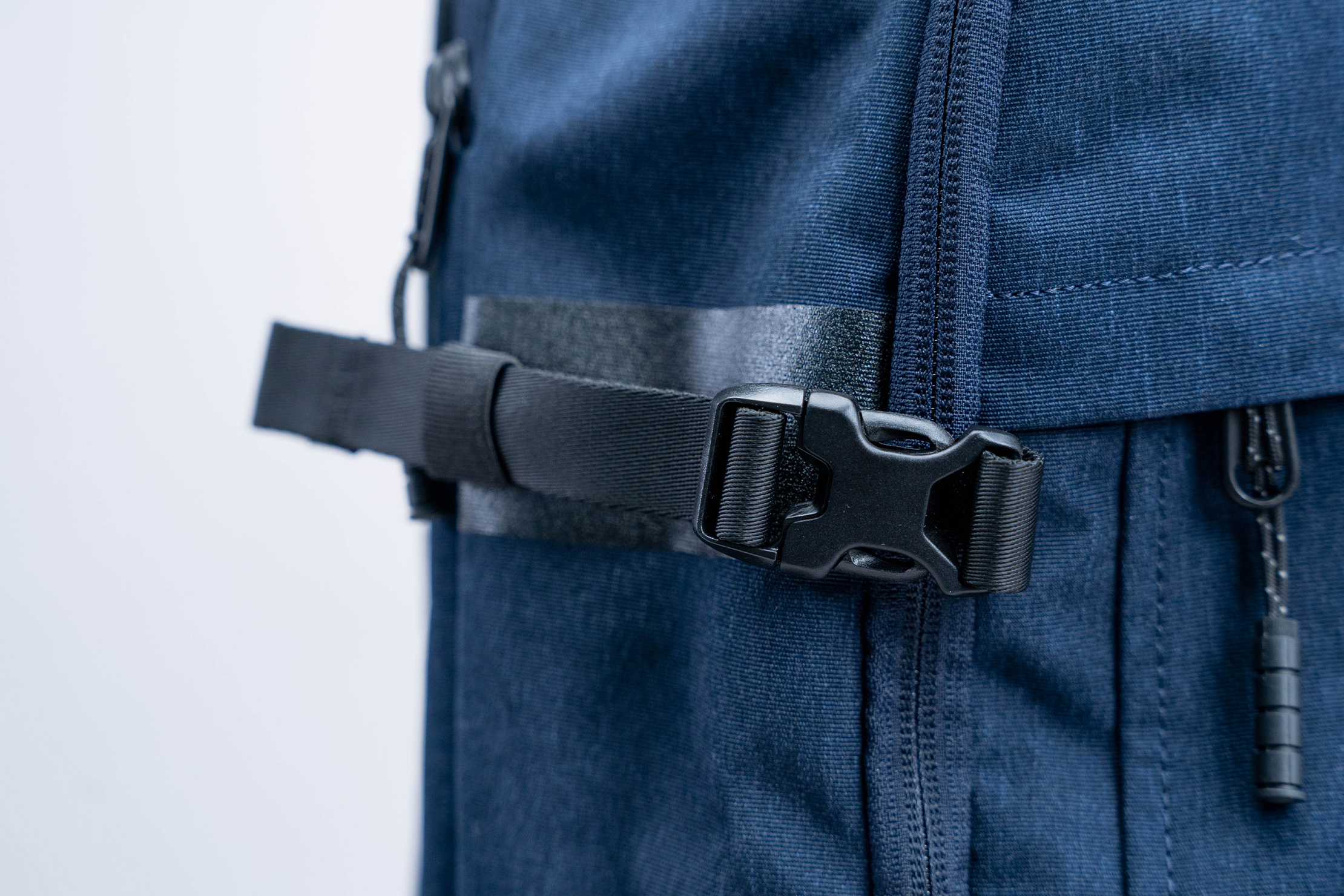
You can, technically, use the left compression strap to attach gear like a tripod or a yoga mat externally. However, since there’s only one, it’s a bit too risky for our liking. We definitely dig the Authority’s bottom-mounted compression straps more in this regard.
The left side compression strap, though, is situated above the lone water bottle pocket, so it can be used to anchor a bottle’s handle. This is what we do with a 21-ounce Hydro Flask, and it works nicely for this purpose. On that note, we really dig the water bottle pocket itself. It’s stretchy, padded, and robust, fitting the bag’s deluxe moniker really well.
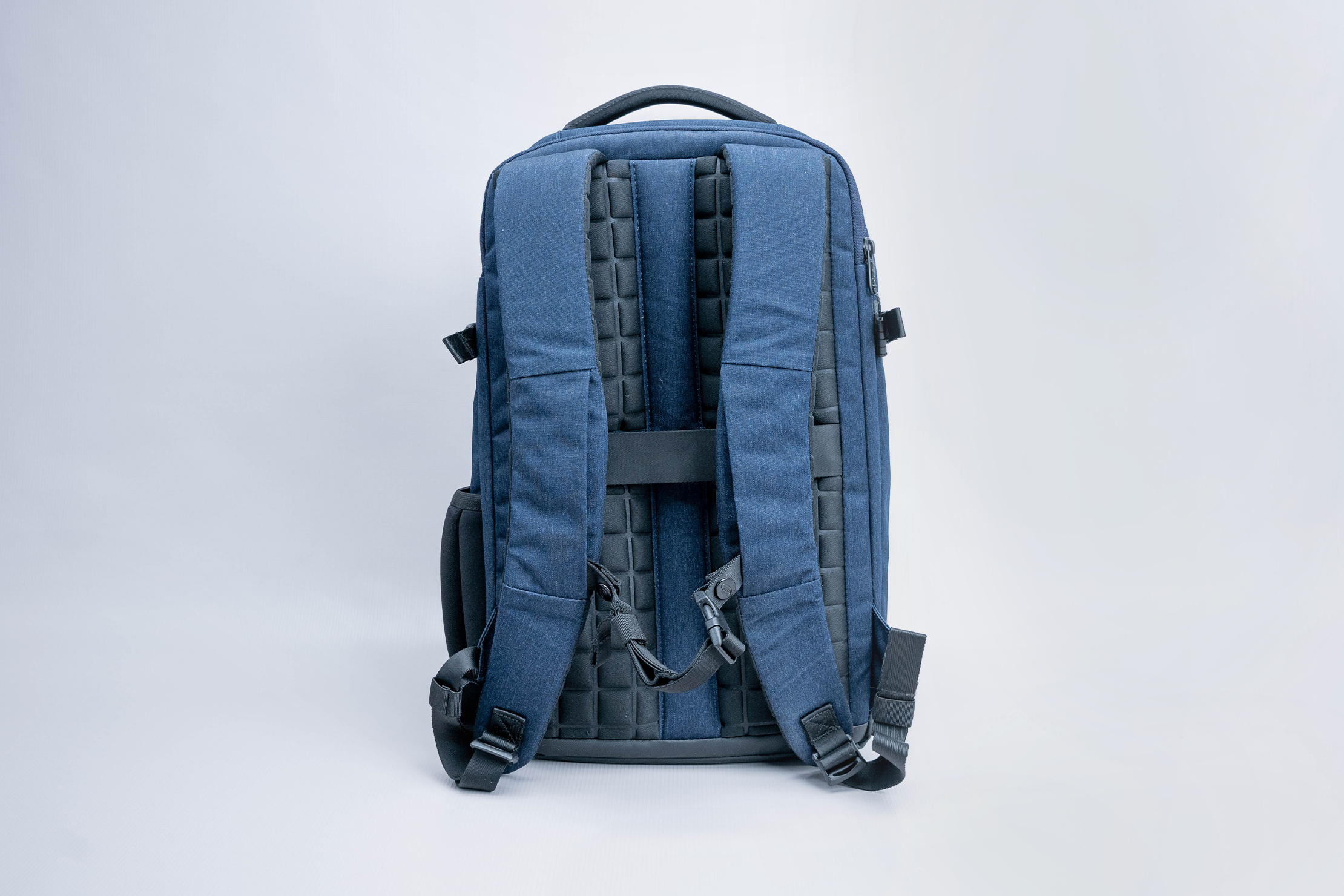
As for the bits and pieces like the hardware and zippers, the buckles are from Duraflex, the adjusters are from Woojin, and the zippers come from YKK. All three are solid brands we’ve encountered on countless other gear, and their parts perform well on the Division.
One look at the Division’s harness system and one word will stick to your mind: grids. Both the shoulder straps’ underside and the back panel are covered in this pattern that breaks up the padding. This allows both parts to flex better as needed while keeping the cushiness cohesive.

The amount of padding is relatively generous on both the shoulder straps and the back panel. You get a good sense of thickness from them without being totally overkill for a 22-liter backpack.
We’re not too stoked on the sternum strap, though. It’s mounted on loops which the strap loops into and fastens onto itself (via a snap fastener). We still like that the adjustment points are hidden beneath a fabric welt. However, the three levels of height adjustment are too few for us. We’ve grown accustomed to lengthy rail-mounted sternum straps, the kind that just slides along, thus, offering very granular adjustment.
Kudos to Timbuk2 for including a strap keeper here. A lot of brands overlook a strap keeper on sternum straps, so we’re more than happy to encourage this small feature wherever we see them.
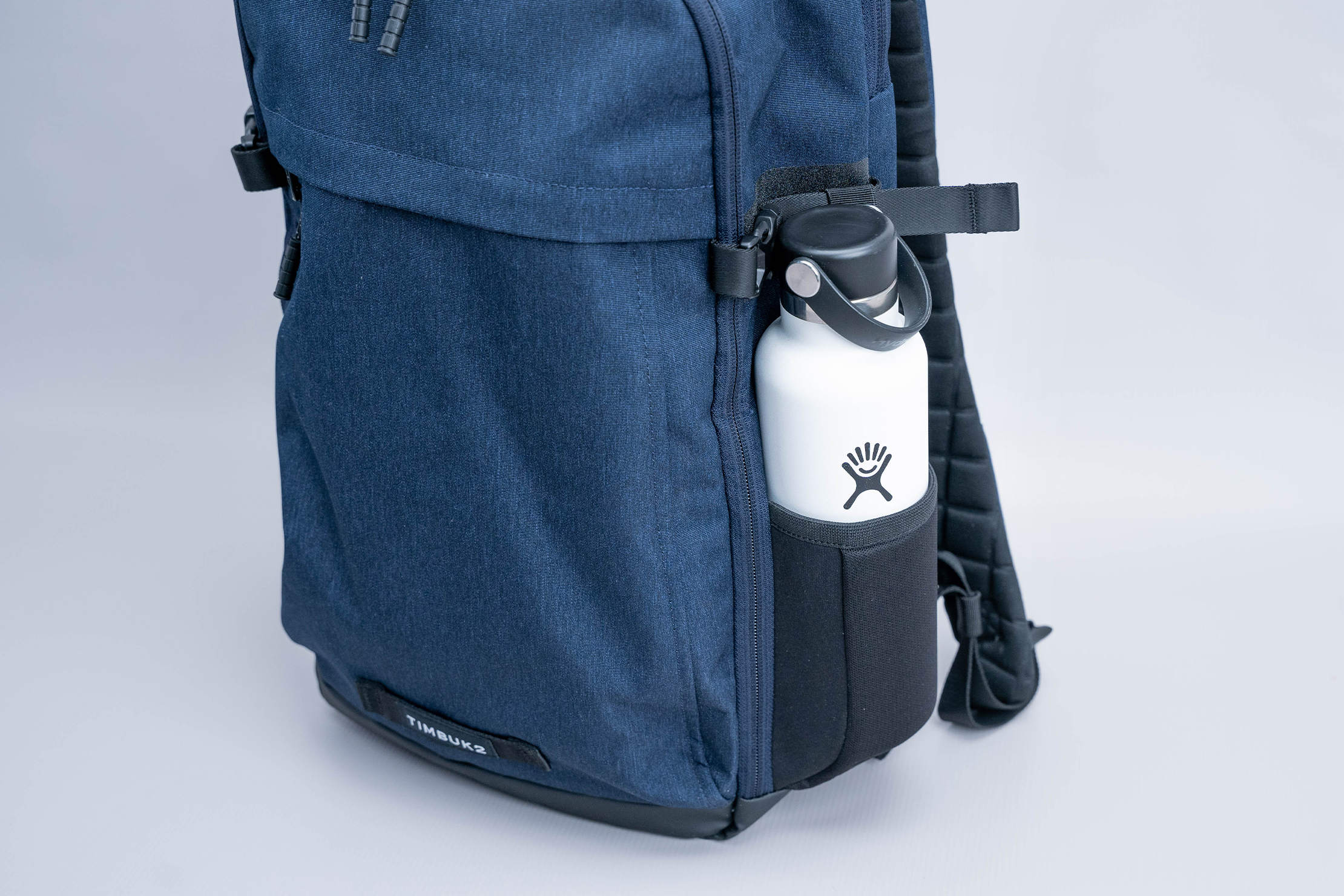
The back panel’s padding is divided into two main sections that leave the middle to serve as a main air channel. That should help keep the air circulating even on a hot day. That said, nothing will prevent a sweaty back if it gets hot enough, so expectations do need to be tempered. A flat nylon strap runs across horizontally and acts as the bag’s luggage pass-through. The setup is nothing fancy, but it will get the job done if you need to rest the Division on your rolling luggage.
Fit Notes
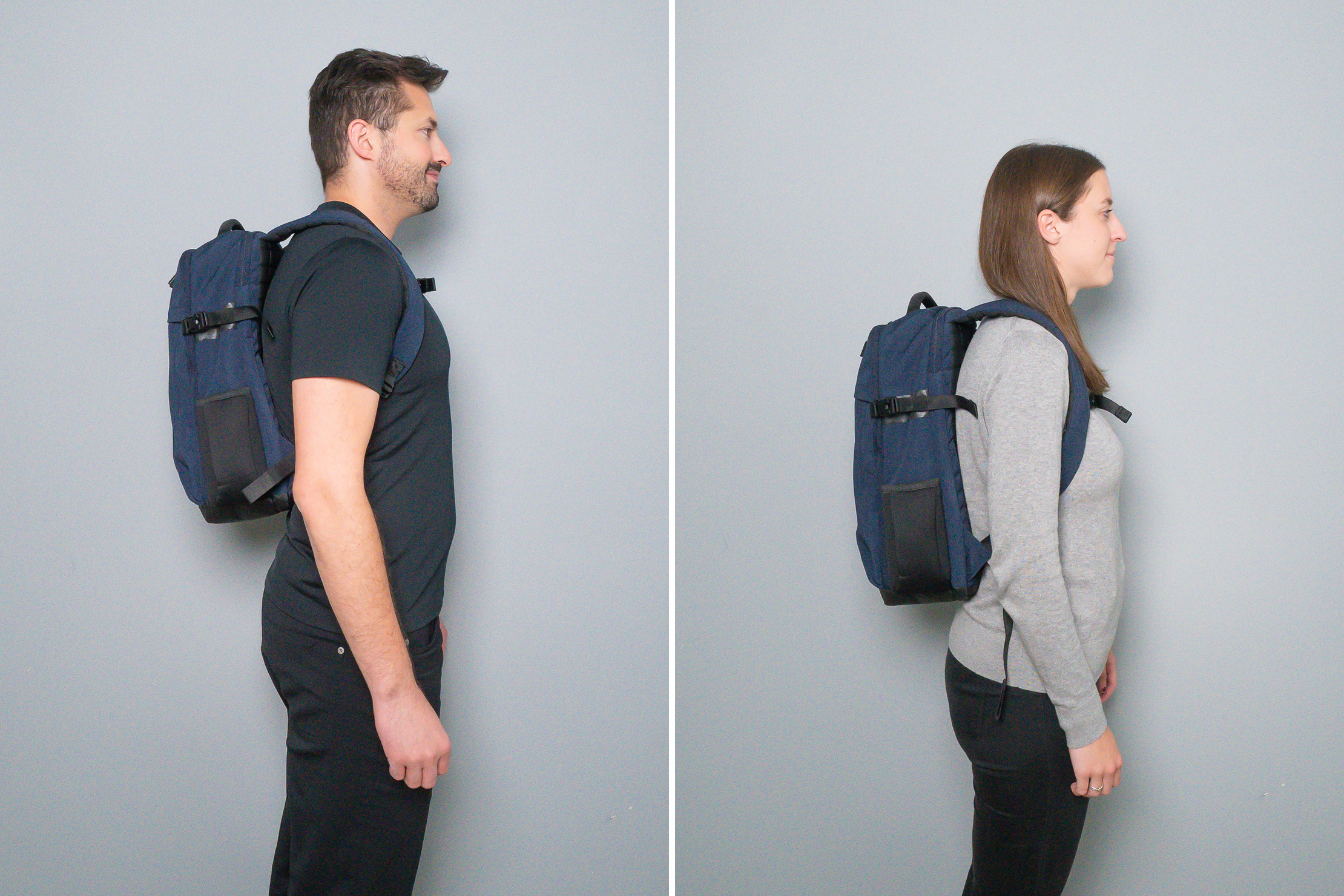
The Division’s harness system isn’t complicated, nor does it need to be since it’s very much within daypack territory. It nails the basics like the well-padded shoulder straps and a comfy back panel. It all translates well into how the bag carries, and we find it to be quite comfortable in everyday use.
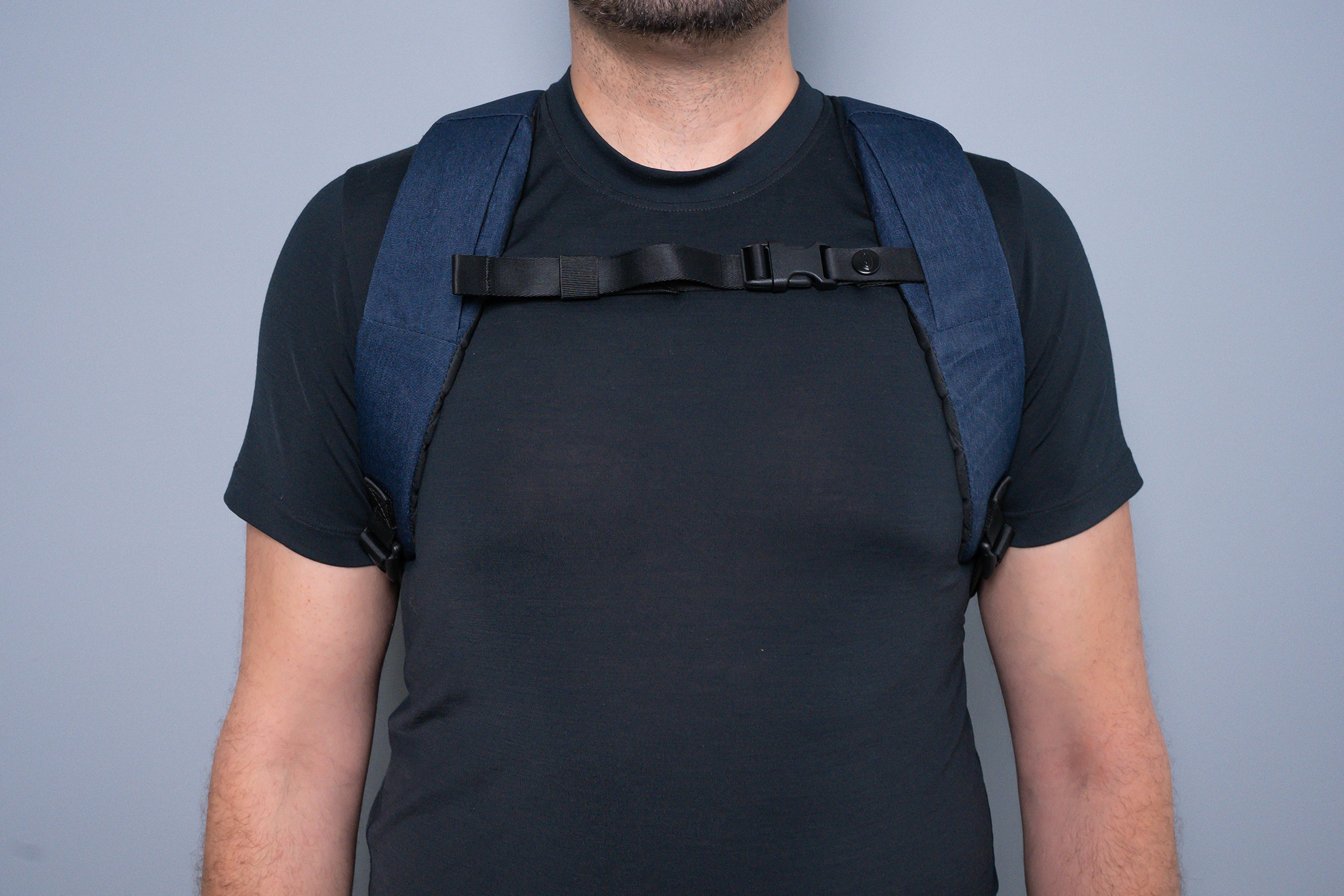
The fit does feel somewhat saggy as the pack tends to pull back a bit. This is regardless of how tight we adjust the sternum and shoulder straps. It’s nothing too bad, however, and we maintain that the carry is overall comfortable. It’s kind of like finding your airline seat a little bit too reclined or just a hair bit too steep—you get used to it once the padding eases you in.
Inside The Backpack
The Division gets a single front pocket as its secondary compartment. Its opening is located just underneath a thin fabric welt. A welt like this has its obvious benefits when it comes to additional weather protection. On the other hand, it can get in the way of the zipper, especially in this case where the welt’s close enough that it can jam the track.
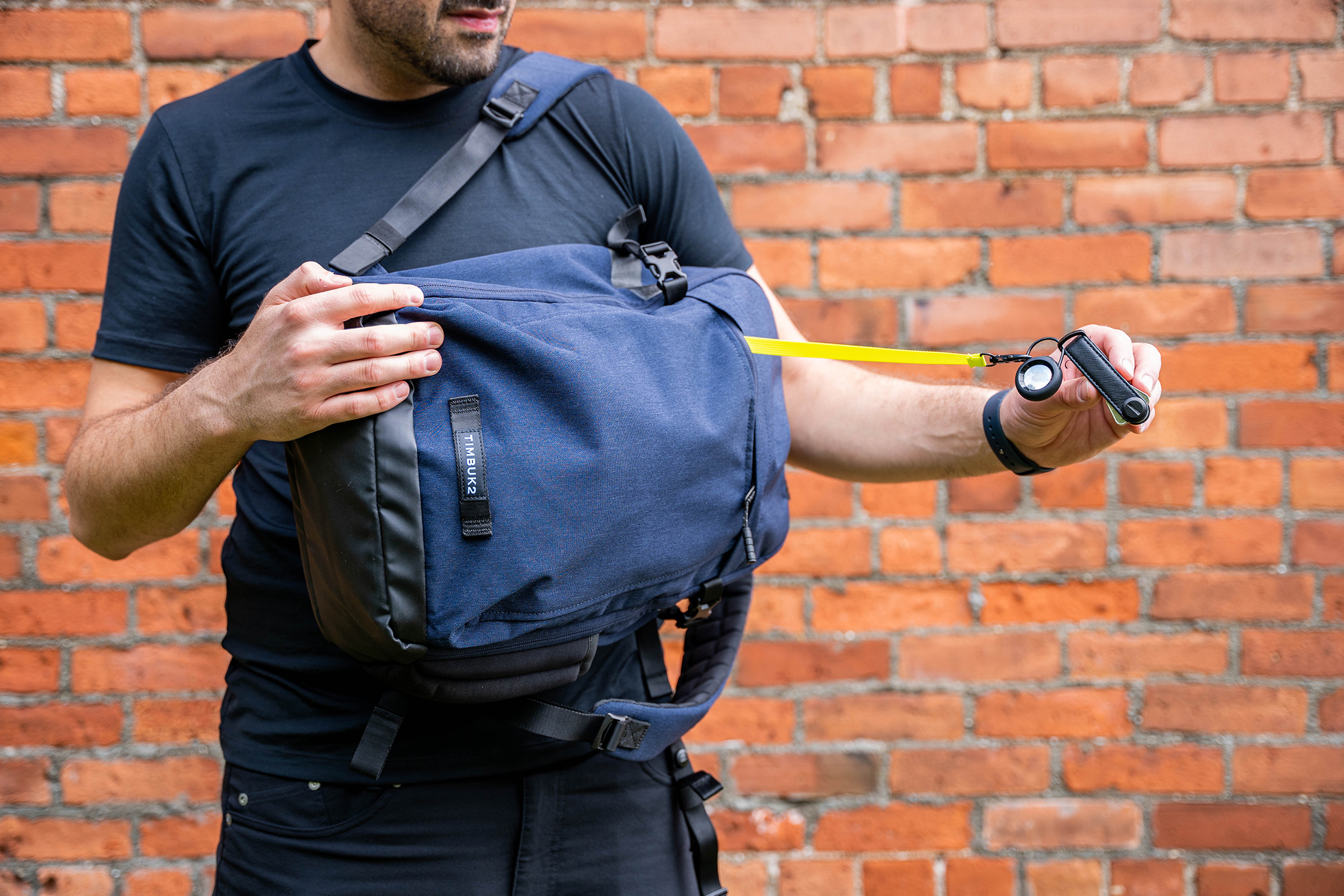
While ease of access may not be its specialty, the front pocket tries to make up for it in spaciousness. The interior is very deep, extending all the way to the bottom of the bag. The horizontal depth is a bit thin, and it’s emphasized once you have the main compartment packed out.
During our tests, we found that the front pocket handles bulkier gear like a buff, packable jacket, or pair of gloves better than smaller gear like tech accessories. Since the pocket is quite deep (and dark despite the grey liner), tiny items can get lost easily, with the exception of keys since there is a dedicated key leash for that. We’re not quite sure how necessary it is for the strap used to be neon green, but at least it’s easy to spot even under poor lighting.
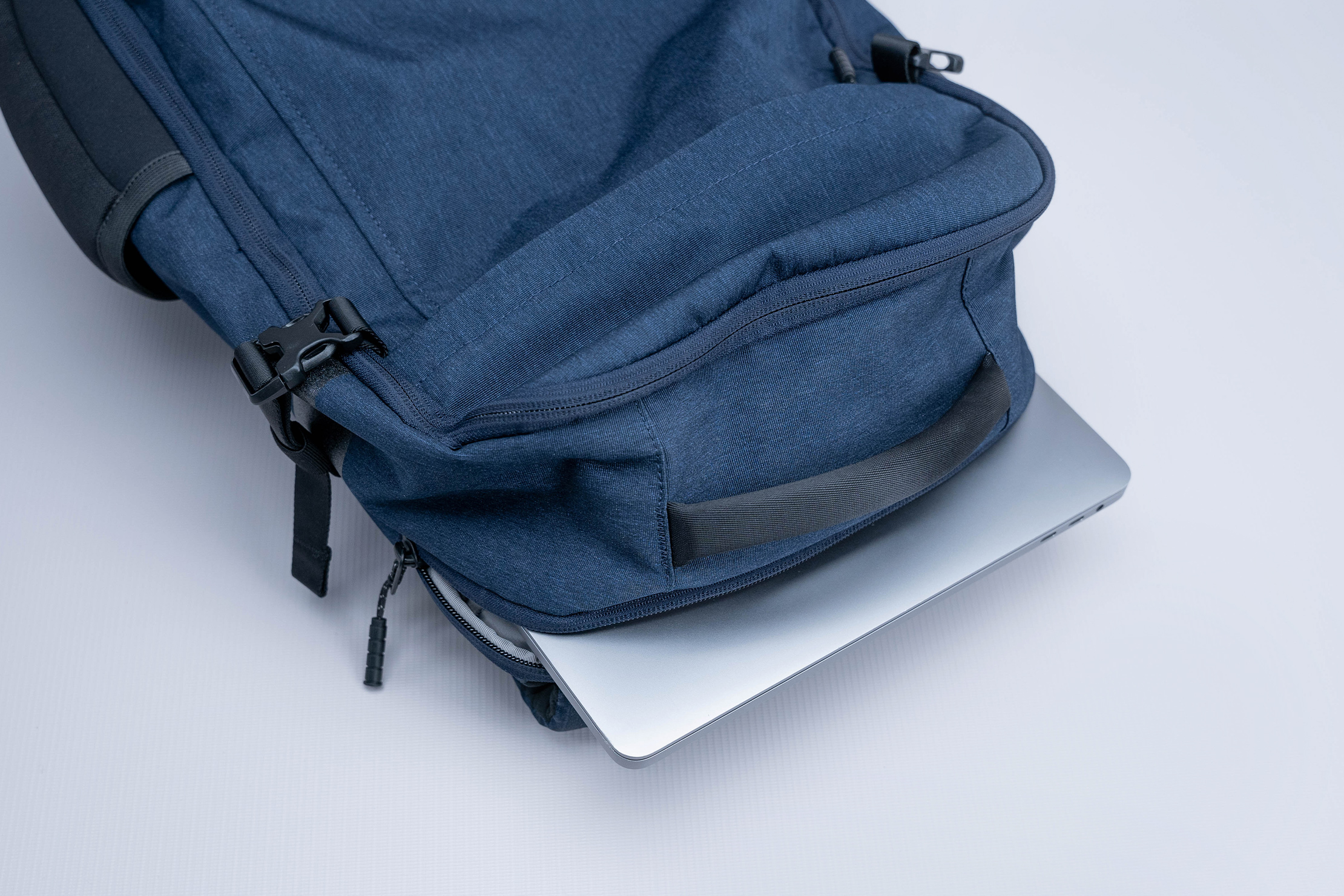
There is a dedicated compartment for a laptop at the back of the Division, with a top opening that we find ideal for pulling out a laptop during flights. The official spec indicates that the max supported size is a 15-inch laptop, though our 16-inch MacBook Pro fits just fine. Keep in mind that a laptop’s display size isn’t a good indicator of its overall size, so your mileage may vary. Something we especially like about the laptop compartment is just how much padding there is between your laptop and the back panel’s surface.
There’s no other way to describe it; it’s just plainly thick. This really shouldn’t come as a surprise, given that the Division’s full name includes the words “laptop” and “deluxe.”
While we appreciate the amount of padding, we do think the false bottom could have been more substantial. As it stands, there is a tiny gap between the bottom of the laptop compartment and the base of the bag, though it’s not enough in our book.
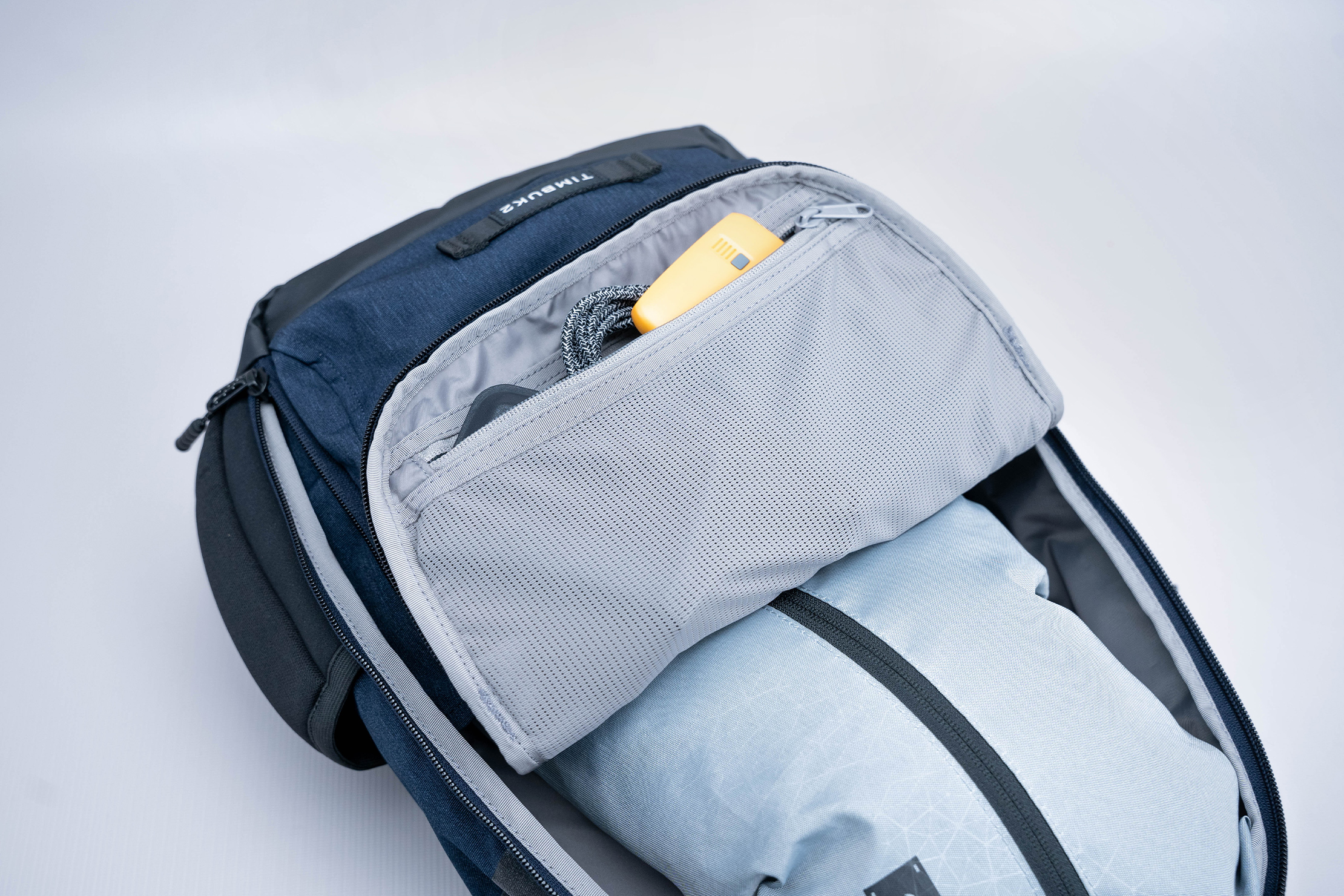
Now, we’ve arrived at the main compartment. As we’ve said earlier, we disapprove of how the side compression straps get in the zippers’ way. We have to either undo the straps’ buckles or maneuver around them each time we want to unzip fully. This isn’t an inevitable issue with backpacks that have side compression straps. Notable backpacks with such straps include Aer’s Travel Pack 3 and the Tropicfeel Nest, neither of which has compression straps overlapping the zipper track.
In a somewhat ironic twist, even when you unzip the Division’s main compartment all the way down, the front doesn’t quite open like a clamshell as you would expect it to. There are fabric gussets at the sides that stop it from fully folding down, thus giving the Division a more horseshoe-style bucket opening. All in all, the design doesn’t feel as cohesive as it should be and could use some refinement.
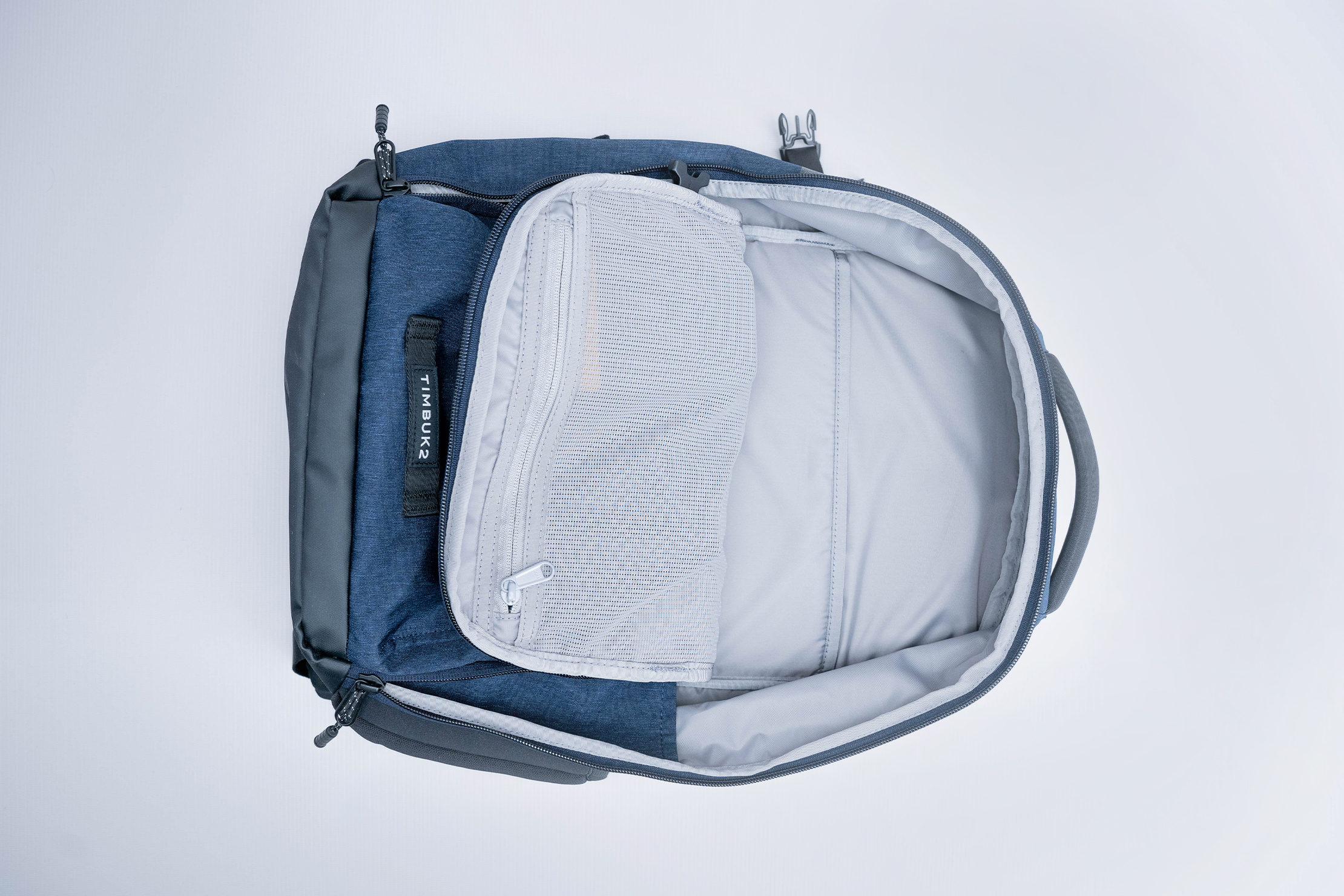
Whether Timbuk2 should’ve gone for a fully clamshell or horseshoe-style opening is up for debate. Our preference is more towards the former for easier packing, but strong arguments for the latter can also be made. Gusseted openings can offer a middle ground, though we can’t really say the same about the Division because of the obstructive compression straps.
On the front side is a zippered mesh pocket. We rely on this pocket for our quick-grab everyday carry items, such as our face mask, sunglasses, passport, and notebook, since the front pocket’s zipper isn’t very easy to operate under its welt. As such, this top half can make it fold over on its own when we open the main compartment. Fortunately, none of our gear falls out since the pocket is zippered.
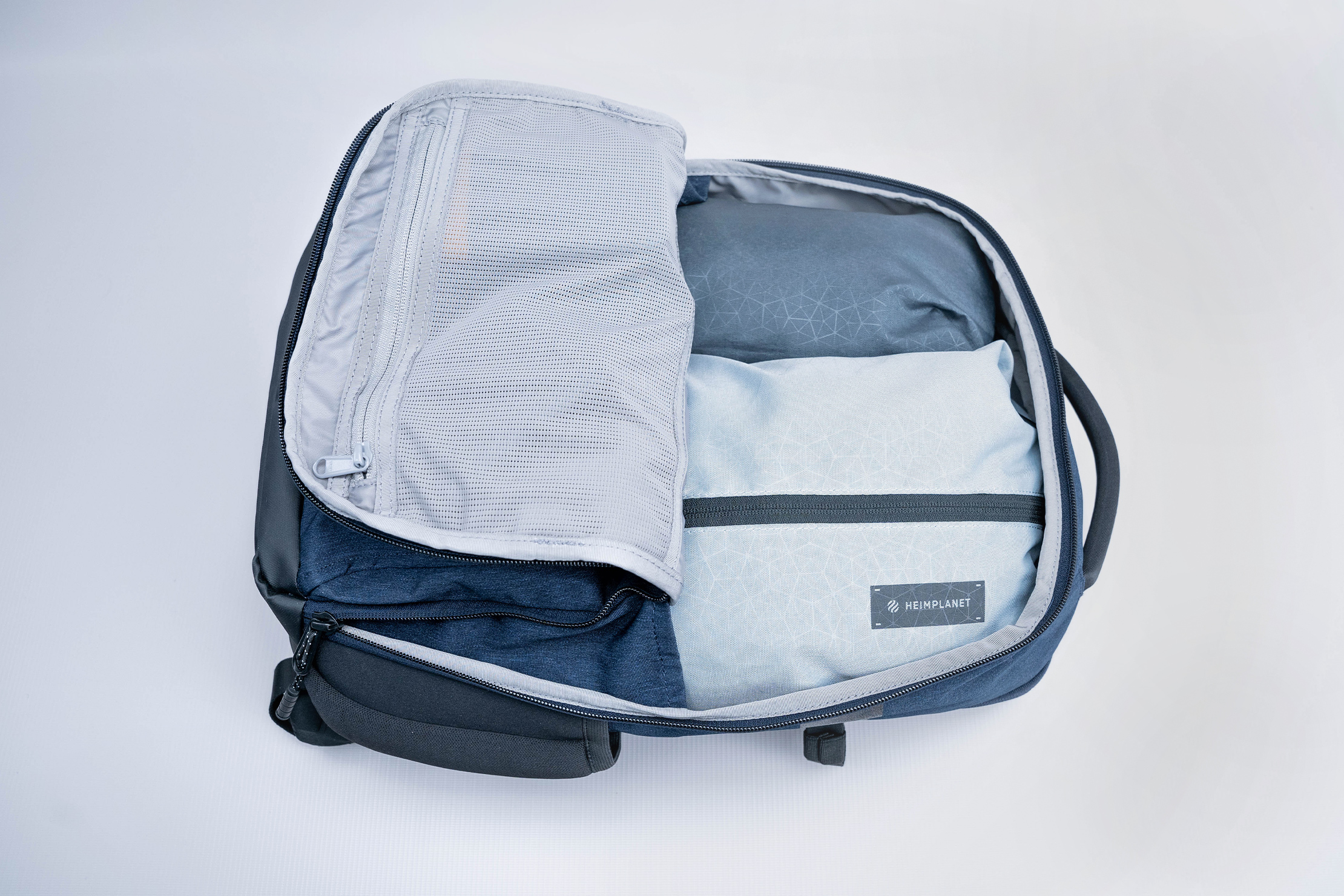
That said, the mesh pocket is still inside the main compartment, so ease of access isn’t optimal for reasons we mentioned earlier. Thus, we wish there was another external zippered pocket for quick-grab items.
Space inside the main compartment is suitable for a packing cube or two, plus an additional pouch and a rolled-up jacket. The floor is flat and squared, so it’s easy enough to stuff bulky gear like that inside. Towards the back is a simple sleeve where flatter items like a tablet or some documents can slide in.
Access to the sleeve can get awkward since the opening is relatively near the compartment’s ceiling. We have to either maneuver our gear in different ways or flatten the fabric ceiling to get around it. Your mileage may vary depending on what sort of gear you’re trying to stuff here, but it can get fussy if it’s too tall or too obstructed.
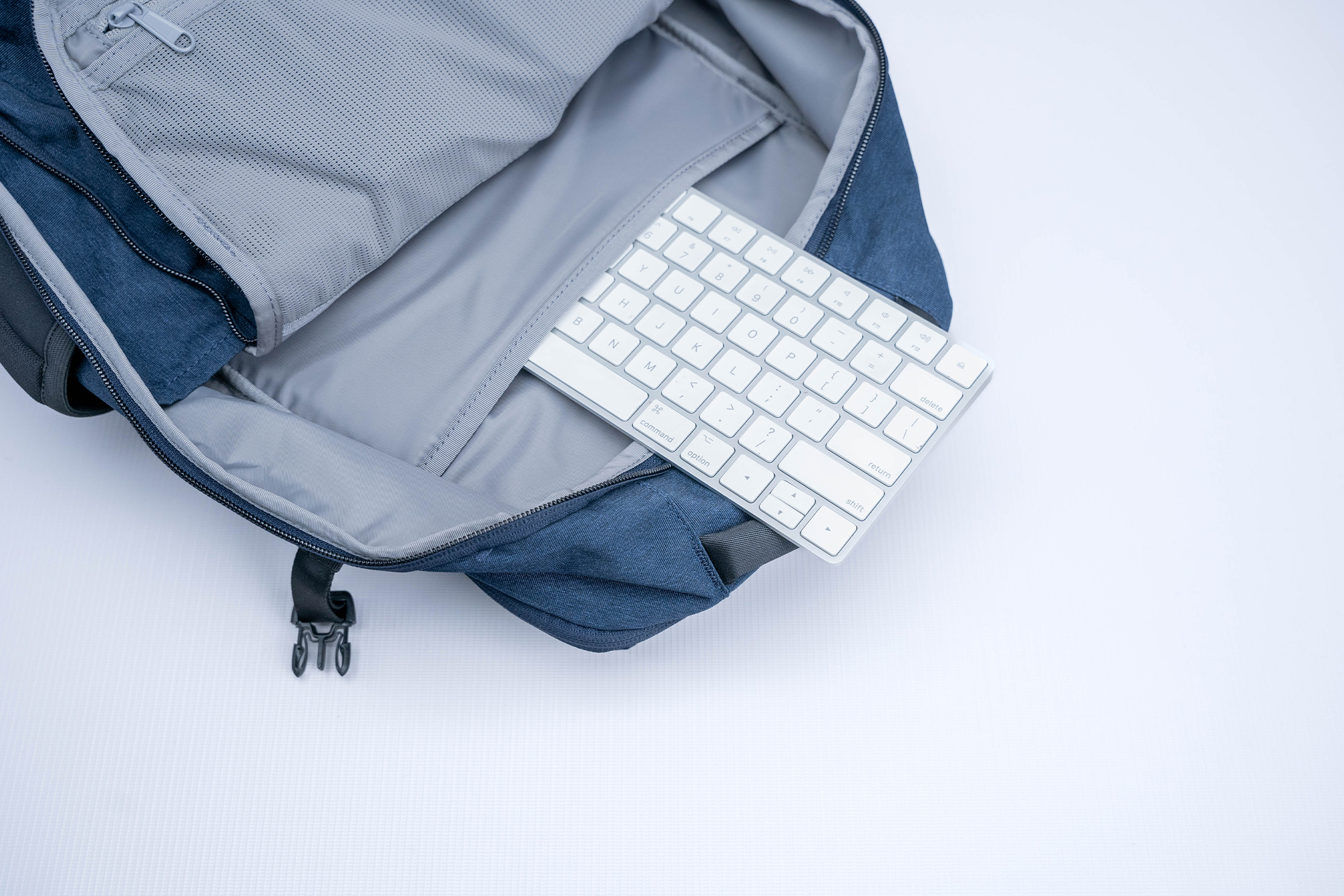
Accessibility, in general, is a sticking point for the Division despite its pros in terms of carrying comfort and build quality. Again, the fussiness in getting into the pockets and compartments isn’t a total deal-breaker. However, if you’re looking for a daypack that excels in the accessibility department, then this isn’t it. It’s still a well-made backpack with enough padding for comfort and device protection, and in those regards, it does excel.
Usage Timeline
Condition: Excellent
- Bag reminds us a lot of the Authority Laptop Backpack (Deluxe)
- Seems like a nice size right off the bat
- Noticing the compression straps obstruct the main zipper unless unbuckled, which can be a pain for fast access
Condition: Excellent
- Unfastening the compression straps each time we opened the main compartment proved to be pretty annoying in testing
- The carry is comfy
- Nice main compartment but wanted a little more opening space
- Front pocket proved hard to utilize for smaller items
- There’s no quick access pocket which wasn’t great—closest thing was the mesh pocket inside the bag behind 2 zippers



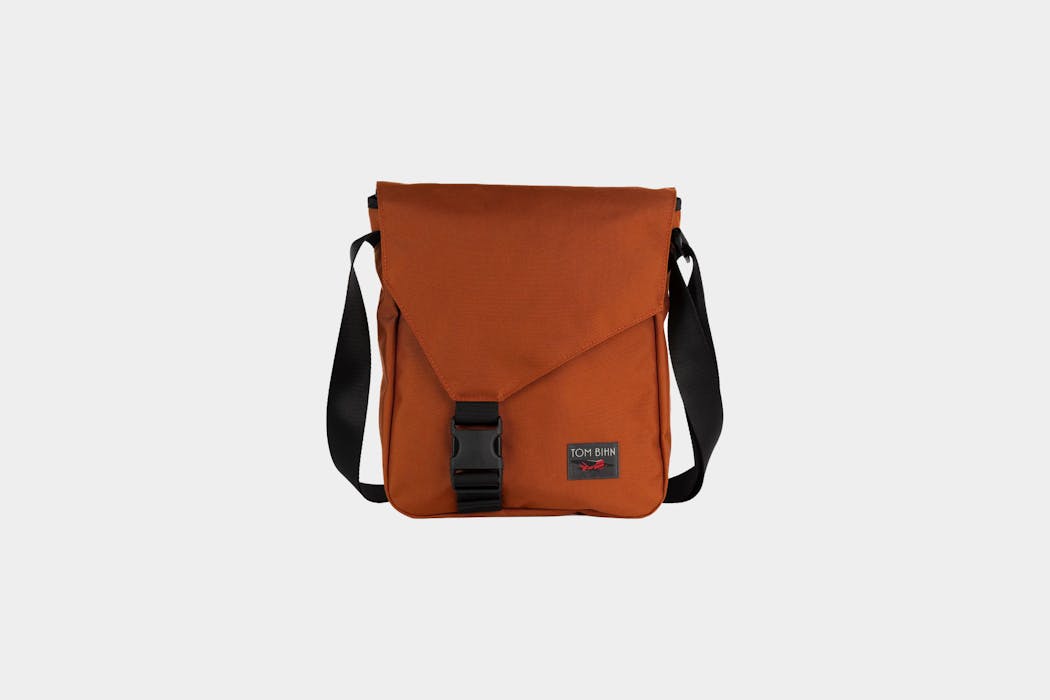




Get your questions about the Timbuk2 Division Laptop Backpack Deluxe answered from our team and the Pro Community right here on the page. Plus, join discussions with other members about gear, guides, and more.
Join Pack Hacker Pro or, Sign In